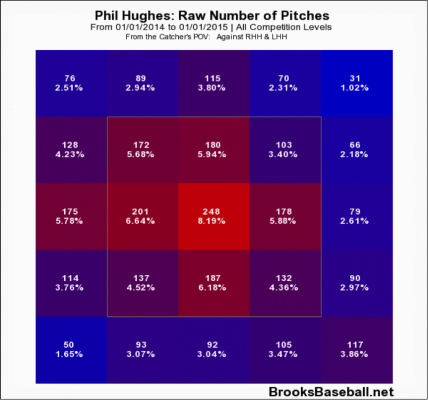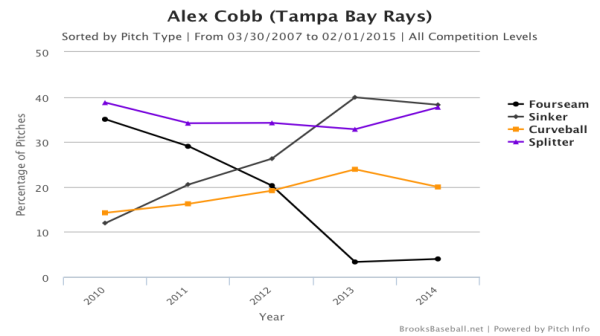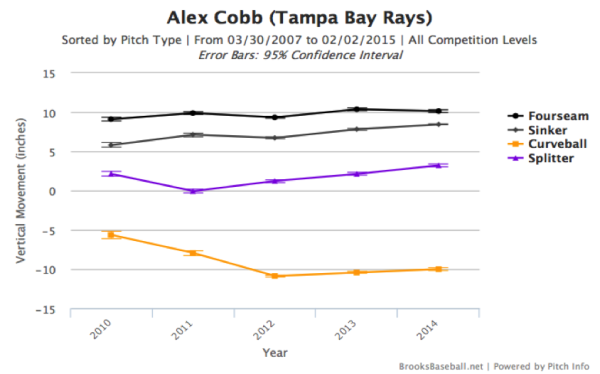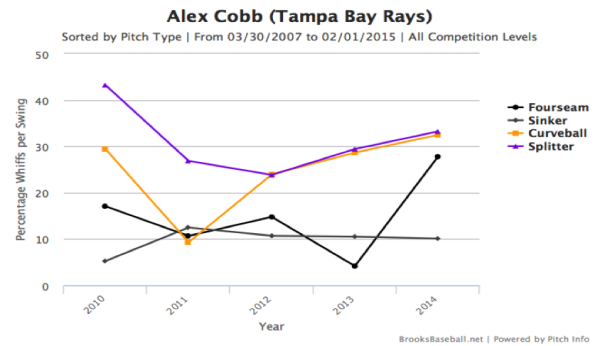Was Clay Buchholz Ever That Good?
This might be a scary thought to consider if you’re a Red Sox fan or if you’re a member of the Red Sox front office. Most of us including myself perceive Buchholz to be a really good pitcher who just happened to have a terrible year in 2014, which he did. Buchholz last year finished with a 5.34 ERA, which was the worst ERA of his career. His peripherals were better — that being said they were not great — his FIP was 4.01 and his xFIP was 4.04. The problem is that I think the Red Sox are banking or hoping that Buchholz has a bounce back year in 2015 and finds the “Cy Young” caliber form he displayed in 2013.
Buchholz in 2013 posted a great ERA at 1.74, and his FIP was really good too at 2.78. The problem was that he just couldn’t stay healthy throughout the year only pitching 108 innings. This has been a chronic problem for Buchholz throughout his career. Buchholz has never pitched 200 innings in a season; the most he’s ever pitched was in 2012, where he threw 189.1 innings. The other problem is that Buchholz performance has always been very volatile, one year he has a good ERA and then the next he has a bad ERA.
So let’s take a look at Buchholz’s underlying numbers to try and get a better understanding of his erratic performance records. First let’s look at 2013, where he conceptually had the best year of his career. He as I’ve already mentioned posted a great ERA though in a limited sample size. His BABIP that year was also very low at .254. What, however, was most alarming was his left on base percentage (LOB%). His LOB% in 2013 was at 83.7%, which is extremely high. A normal or league average LOB% is normally around 72%, Buchholz that year was well above that and quite frankly unsustainably high. Then if we look at his HR/FB ratio, at 4.5%, it’s also at an unsustainable rate. If you combine these factors, the low innings pitched, the BABIP, the HR/FB, and the LOB% for Buchhotlz great 2013 ERA, it’s easy to see why he had such a low ERA and why that probably was just a fluke.
Now let’s look at his 2010 season, which was considered by most to be his breakout year. In 2010 as you might have guessed Buchholz had a great ERA at 2.33, which probably gave the impression that he had a great year. His FIP however was at 3.61, which is above average, but his xFIP was at 4.07. His BABIP and HR/FB were also at unsustainable rates that year. His BABIP was .261 and his HR/FB ratio was at 5.6% creating his low ERA.
Finally let’s take a look at his 2012 season, the year where he pitched the most innings of his career, 189.1. I think this is the year that best describes Buchholz’s true value and not the skewed value of his 2010, 2013, and 2014 seasons (If you’re wondering what about 2011? Well he only pitched 82.2 innings so I pretty much discounted that year from the analysis). In 2012, Buchholz finished with a 4.56 ERA, his FIP was 4.65, and his xFIP was 4.43. These are not good numbers, in fact they’re well below-average numbers. This is a scary scene especially if you’re the Red Sox and hoping that Buchholz will bounce back. The essential problem is that the only year where Buchholz’s ERA lined up perfectly with his peripherals, the numbers weren’t pretty. His LOB% granted was a little bit low at 69.7% but his BABIP was also low at .283.
This is not a welcoming sight. I’m not actually certain that Buchholz was ever that good of a pitcher or rather a top of the rotation starter. It for the most part seems that his good years or good ERAs were merely a product of low BABIPs and good luck. It’s also not like he’s ever been a pitcher with a high strikeout to walk rate. His career K/9 is at 6.88 and his BB/9 is at 3.33. His K/9 and BB/9 have also always remained around his career average, with not much fluctuation, so it’s not like he’s been trending upward in that regard. Who I really think got Buchholz’s value just about right is Steamer. In 2015 Steamer projects him to finish with a 4.19 ERA and a 4.06 FIP, which is right around where I think Buchholz true talent and value lies. For those who think Buchholz has the great potential of a top of the line starter, well I’m sorry but at this point I just don’t see it; I think he’s probably more of a mid to back of the rotation starter. A useful piece in the rotation but definitely not someone who you should count on.



